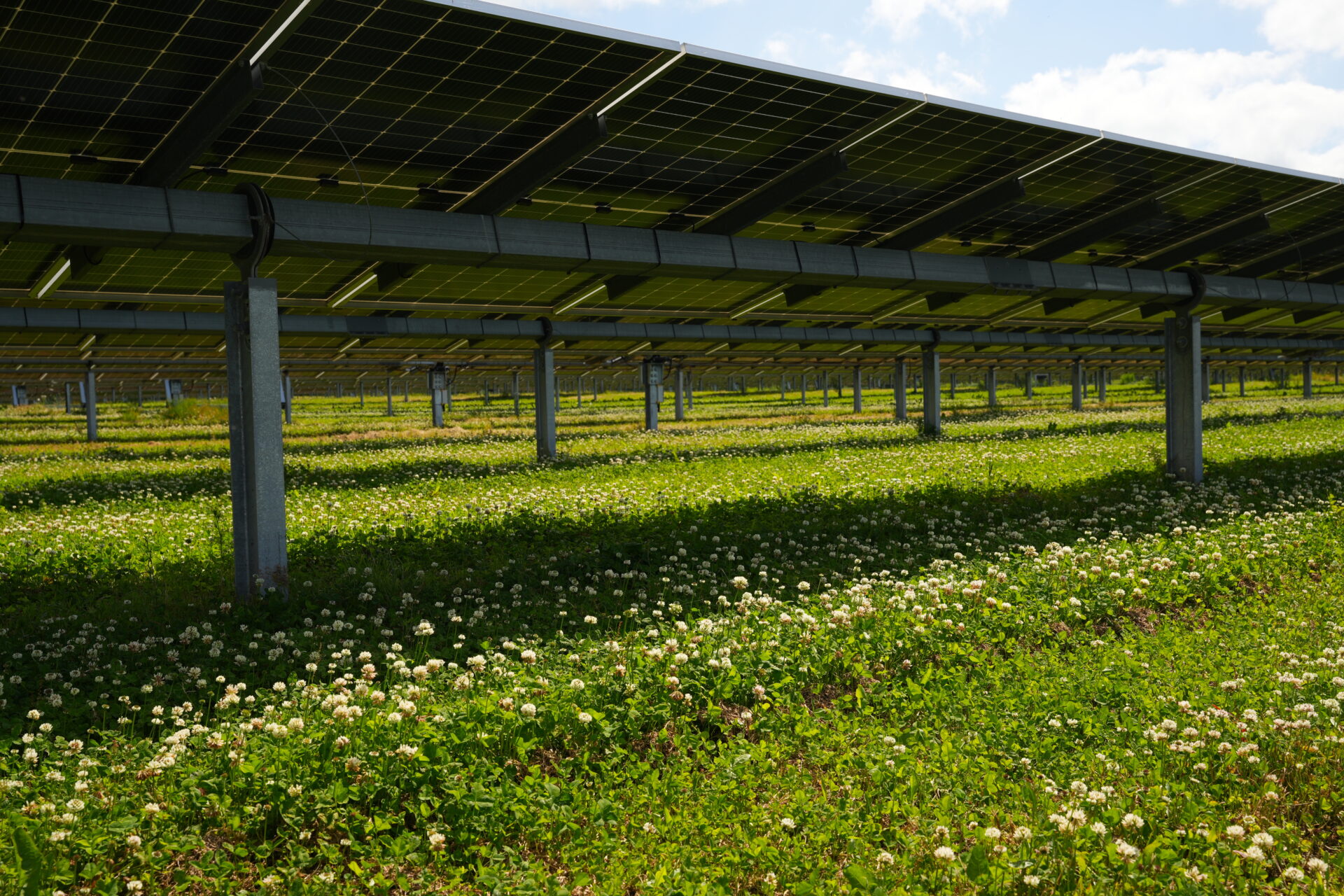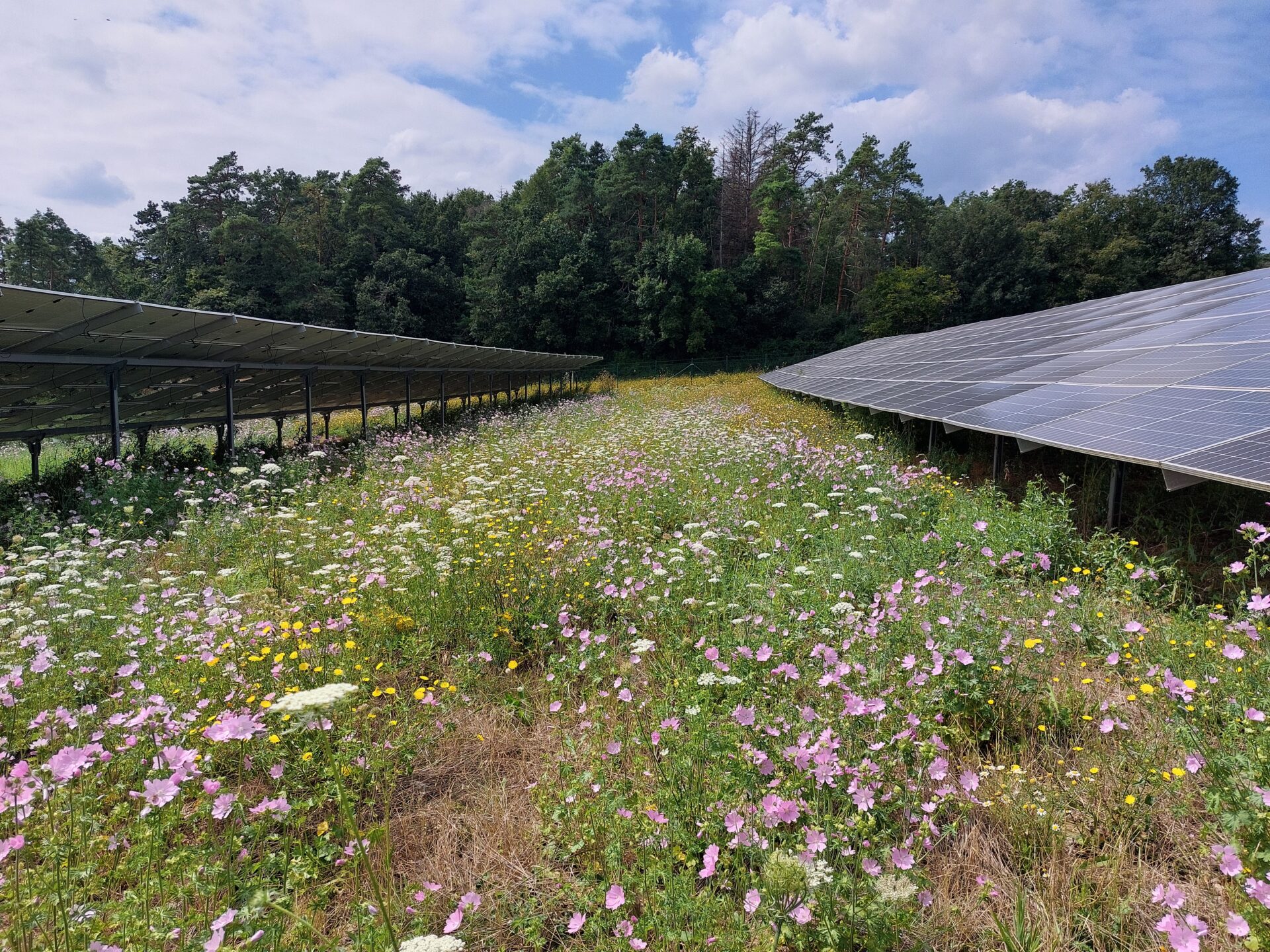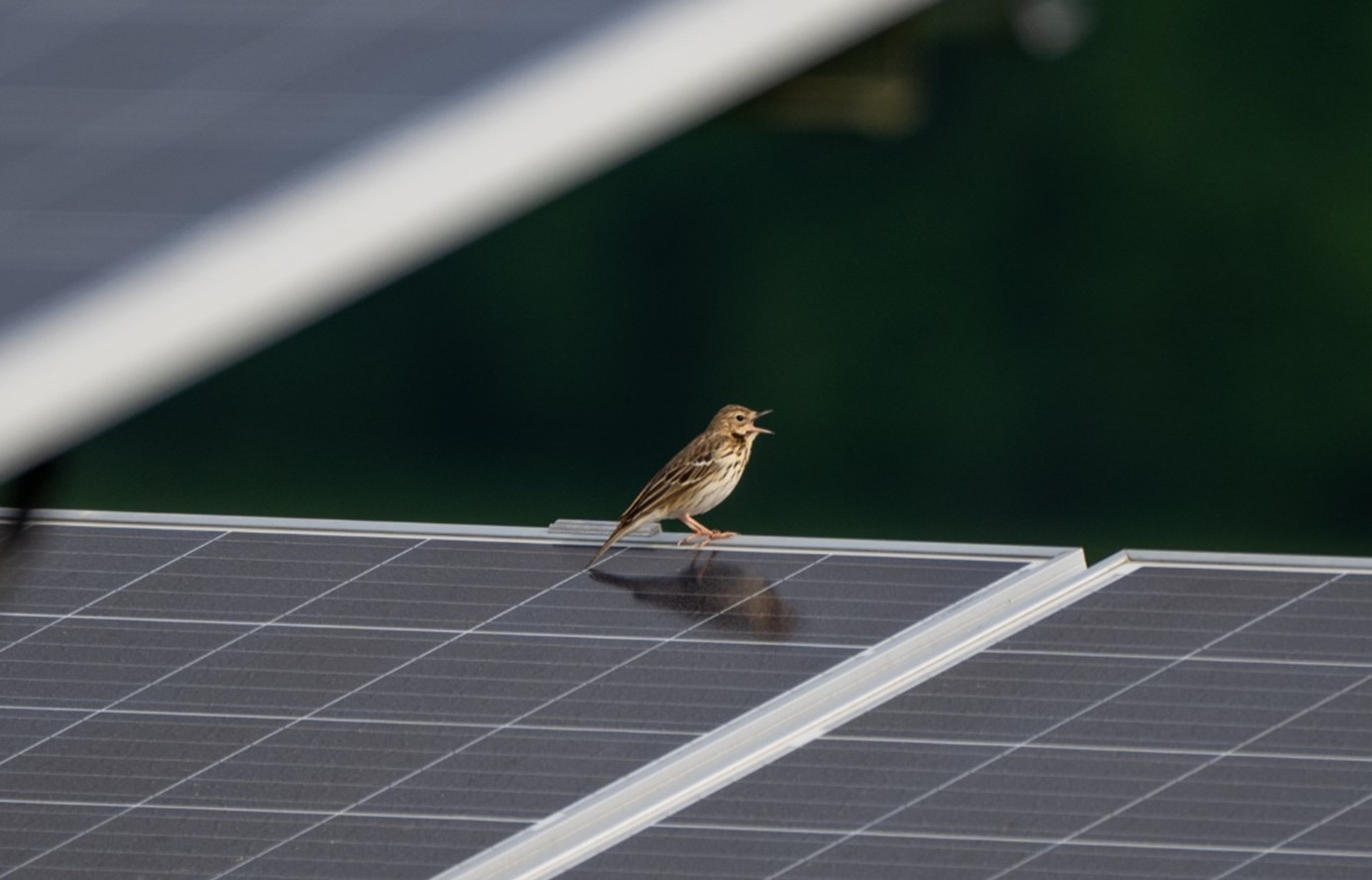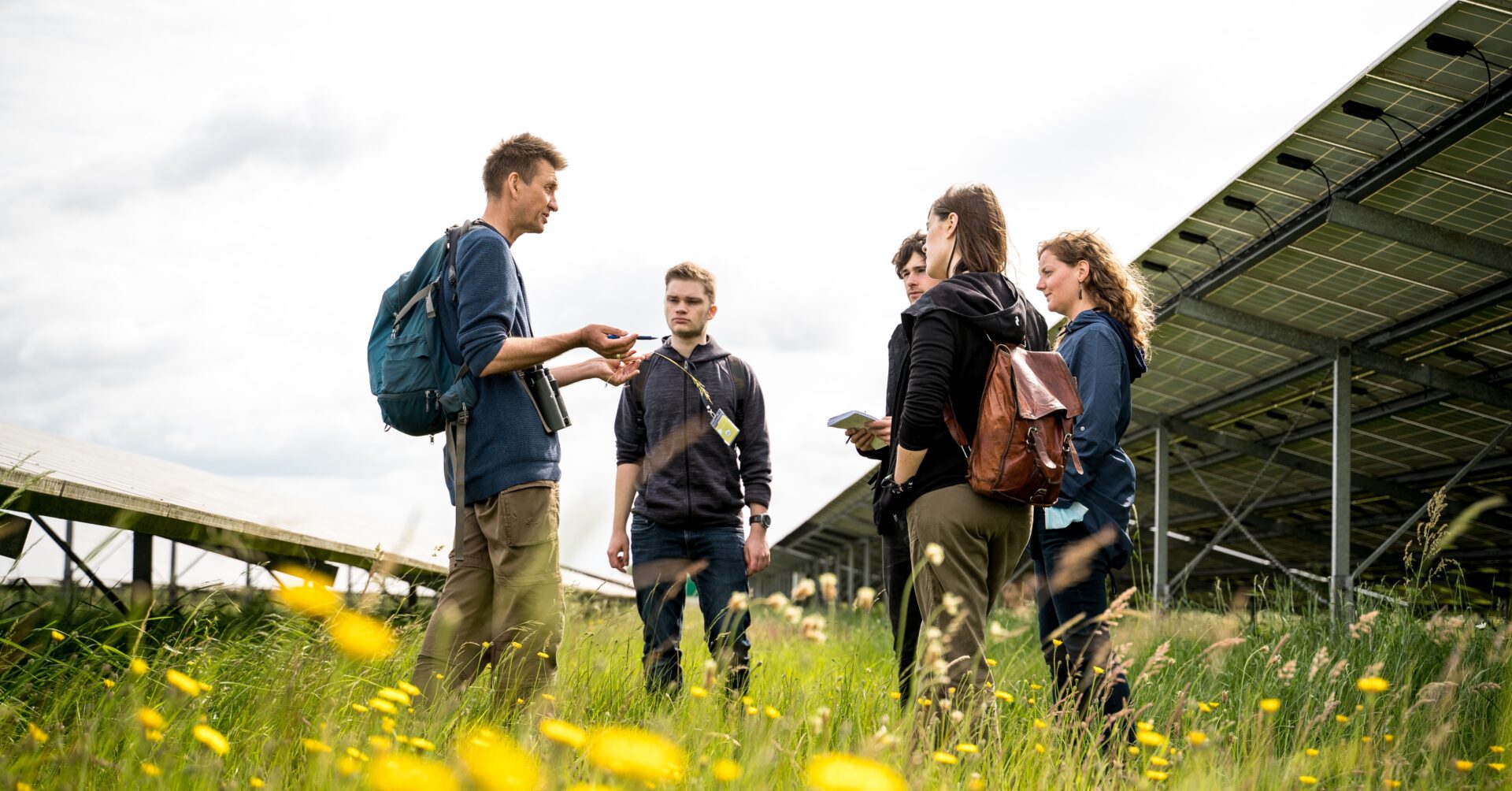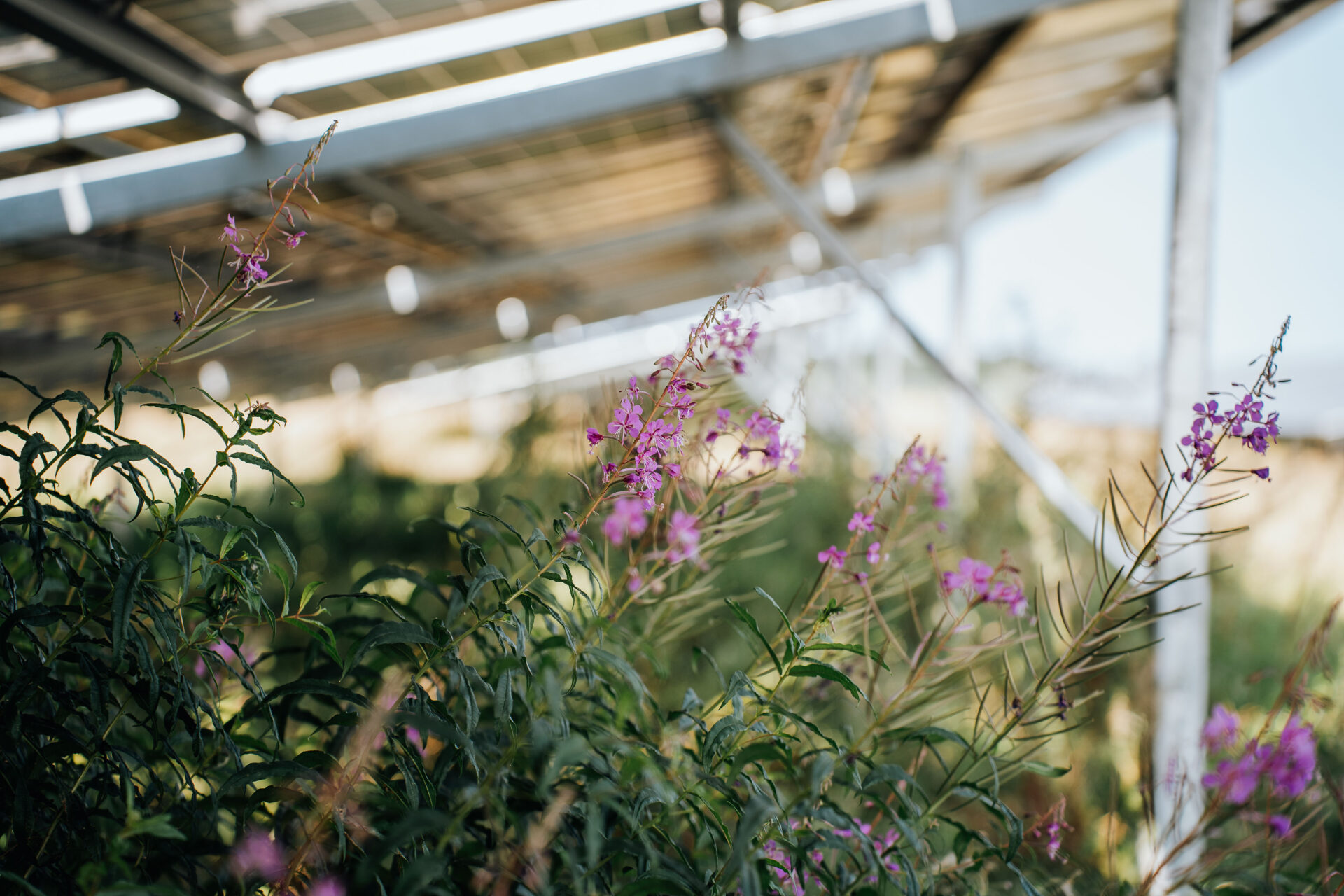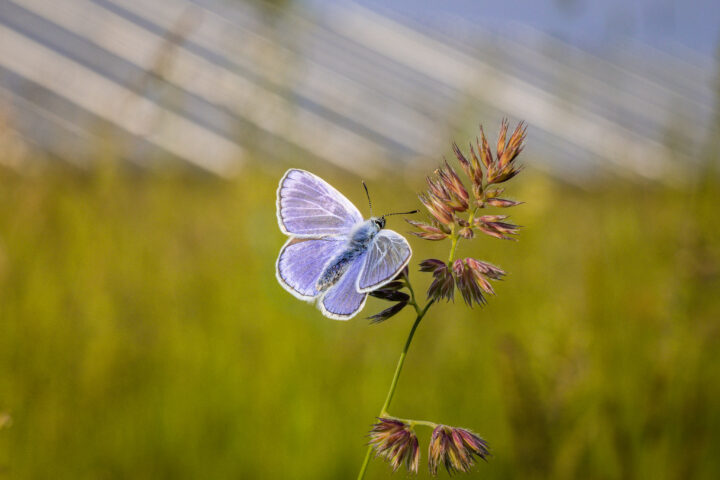In total there are 25 established bat species in Germany. However, their hunting grounds and therefore their food supply are becoming ever smaller due to the use of pesticides on agricultural land. As native bats feed primarily on insects, this poses a serious problem for the flying mammals.
Bats are Strictly protected nationwide and are shown in the FFH Directive Annex IV called. Conservationists are therefore increasingly asking themselves the following questions The question of what impact ground-mounted PV systems have on bats.
The results from the Study "Biodiversity in solar parks" provides initial results here: Bats actively fly to solar parks from their roosts in nearby villages or from wooded areas and use them as hunting grounds. They benefit directly from the often high supply of insects there.
Findings from the study "Biodiversity in solar parks"
How can bats be detected in solar parks?
Why do bats hunt in the solar park?
Which bats hunt in solar parks?
Why did older studies come to different conclusions?
How can bats be detected in solar parks?
Bats are nocturnal. They are therefore informed by default about their Ultrasonic calls identified. In order to be able to include these in the PV systems of the study, either static recordings were made in a total of 14 solar parks with the help of Listening boxes made or with mobile detectors the facilities expired. Most of the bat surveys were carried out by Professional appraisal offices and subsequently analysed.
The study design also included the formation of a Bat cluster consisting of three plants in Lower Franconia, Bavaria (Bundorf, Maßbach and Ramsthal). The aim of the cluster formation was to test whether bats can find the PV systems even without a guiding structure. Although the solar parks are located in close proximity to each other, they are connected to the neighbouring villages in different ways.
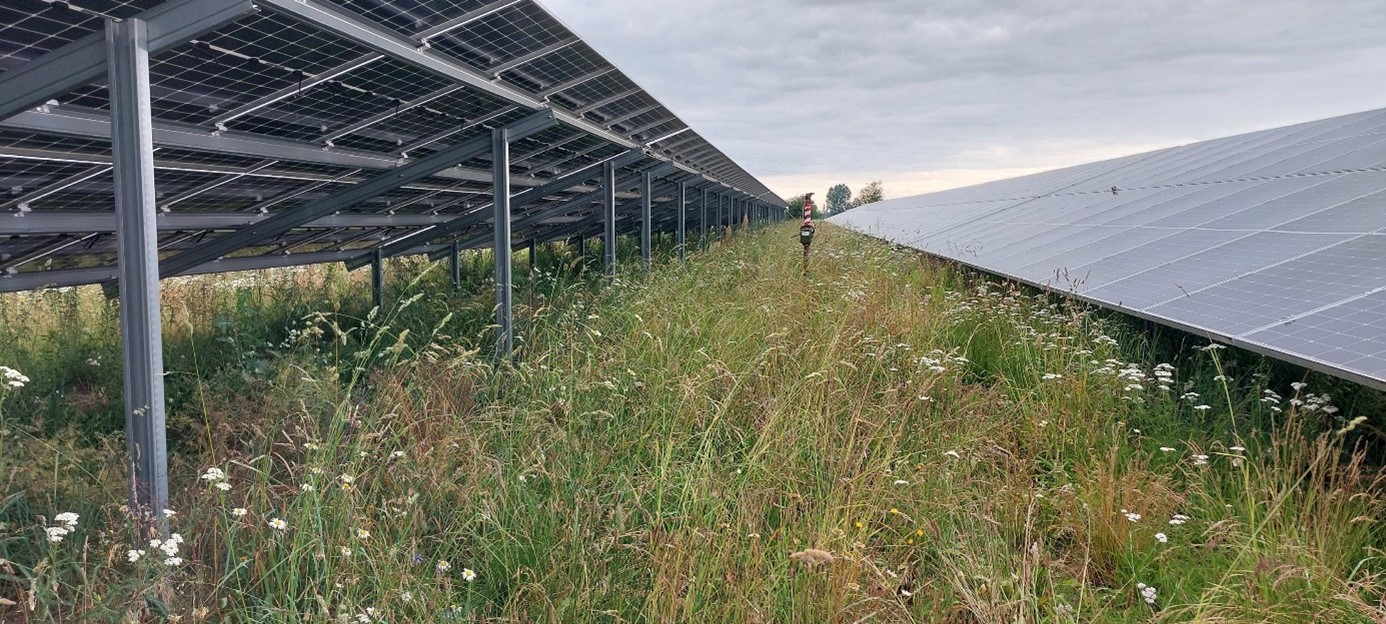
Why do bats hunt in the solar park?
Known for a long time, but proven once again by the study: Solar parks can not only be a High biodiversity of insectsbut also a Large biomass to show.
Through the Avoidance of pesticides A large number of insects develop on the PV systems, which also have a great diversity compared to the areas previously used for wheat and maize production. In addition, the warmer areas on gravel paths or between the modules have an activating effect for hymenoptera or flies, for example. The different plant species in turn attract animalsthat are dependent on them. Bats can therefore expect a broad, rich food supply in solar parks.
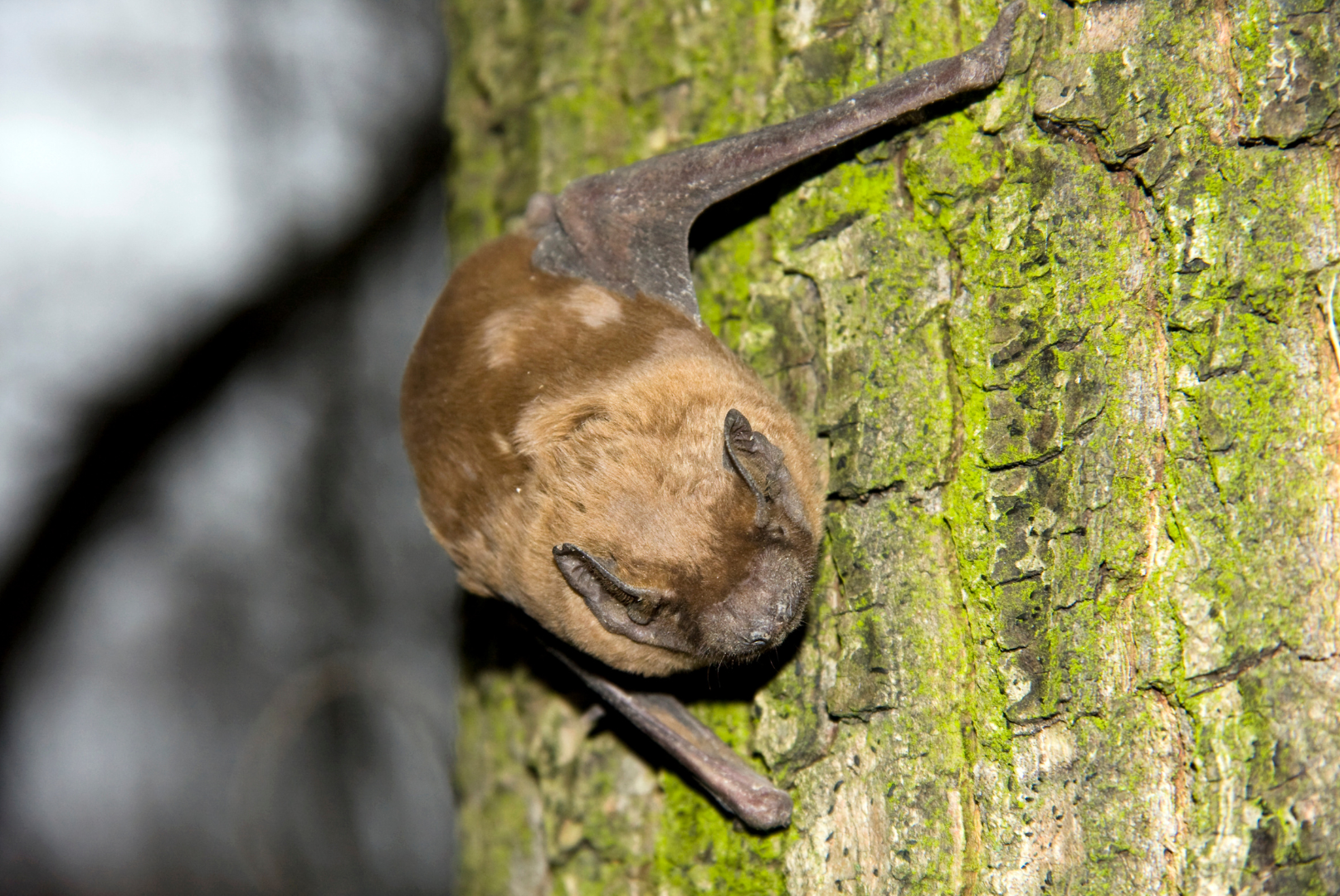
Which bats hunt in solar parks?
Our study recorded 13 species. This corresponds to more than half of the 25 bat species established in Germany. If further studies are added, the figure rises to 19 species and thus three quarters of all species that can occur in ground-mounted PV systems.
With the exception of two of the 14 analysed plants, all of the Large common noctules and the Pipistrelle bat present. The most species in a single site were recorded in Zobersdorf (Bad Liebenwerda). There, 12 different species were recorded. The Wörnitzhofen solar park (10 species) and Bundorf (9 species) followed in second and third place.
It is also noteworthy that species with short-range sonar, such as the Pug batthe plants could be found. This also applies to the plants in the cluster study, which are not or only barely connected by guiding structures.
Ultimately, the authors of the study conclude:
- There is no evidence that solar parks are used less by bats as foraging habitat than other areas.
- The basic prerequisites for using open PV areas as feeding habitats are better than for arable land.
- The intensity of utilisation depends on how attractive the food supply in their hunting grounds is.
In conclusion, they formulate: "It has been shown that PVA can be an extension of habitats for bats and it is by no means to be assumed that the animals will be harmed."
Total detections of bats in the investigations of the study
| Species name (German) | Species name (lat) | RL BRD |
| Brown long-eared bat | Plecotus auritus | 3 |
| Broad-winged bat | Eptesicus serotinus | 3 |
| Fringed bat | Myotis nattereri | + |
| Common noctule | Nyctalus noctula | V |
| Lesser noctule | Nyctalus leisleri | D |
| Greater mouse-eared bat | Myotis myotis myotis | + |
| Pug bat | Barbastella barbastellus | 2 |
| Mosquito bat | Pipistrellus pygmaeus | + |
| Northern bat | Eptesicus nilssoni | 3 |
| Hoary bat | Pipistrellus nathusii | + |
| Water bat | Myotis daubentonii | + |
| Two-coloured bat | Vespertilio murinus | D |
| Pipistrelle bat | Pipistrellus pipistrellus | + |
nationwide endangerment in the Red List of the Federal Republic of Germany (RL BRD) (Meinig et al.
2020), + = endangered, V = early warning list, 3 = endangered, 2 = critically endangered, D = data situation uncertain.
Conclusion
Solar parks do not represent a deterioration in habitat quality for bats, but rather tend to be a gain if they are built on conventional arable land. For this reason, no compensation is generally required in the authorisation.
Peschel & Peschel summarise in chapter 8:
"For these reasons, no compensatory measures are required; on the contrary, it should be noted that PVAs can generally increase their suitability as foraging habitats. They are also helpful as guiding structures in the landscape."
More information about bats
Biologist Dr Helmut Schlumprecht carried out the investigations for the "Biodiversity in the solar park" study. He gave a presentation (only available in German) on his findings when the study was published.
All details and results of the study "Biodiversity in solar parks" can be found here:
